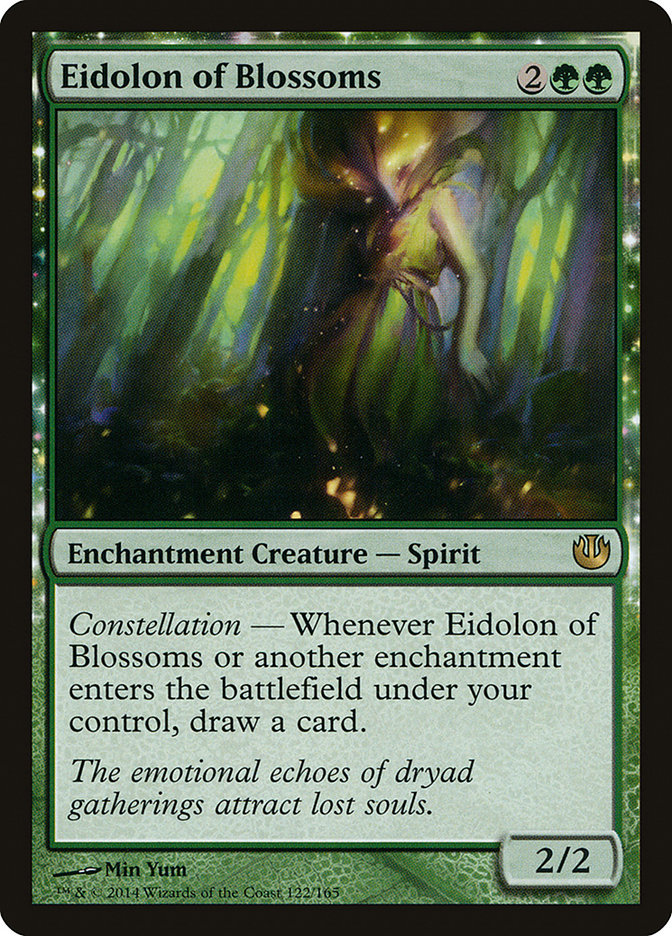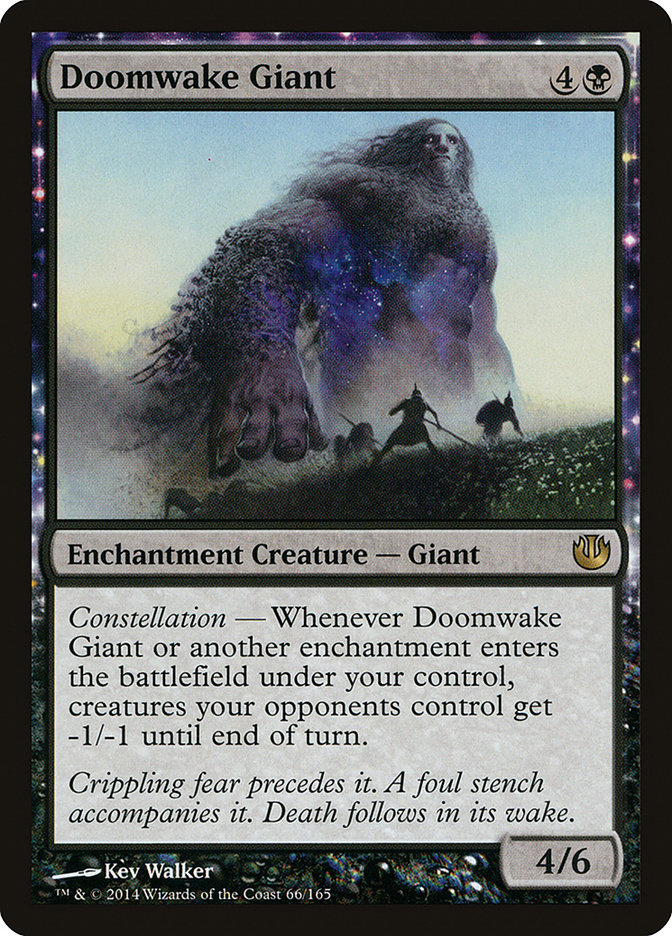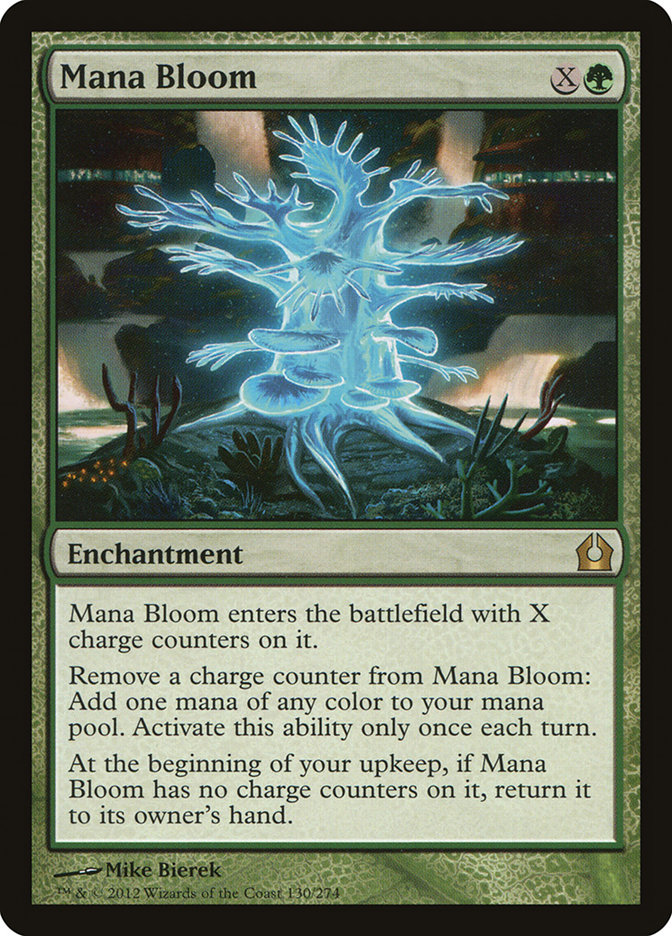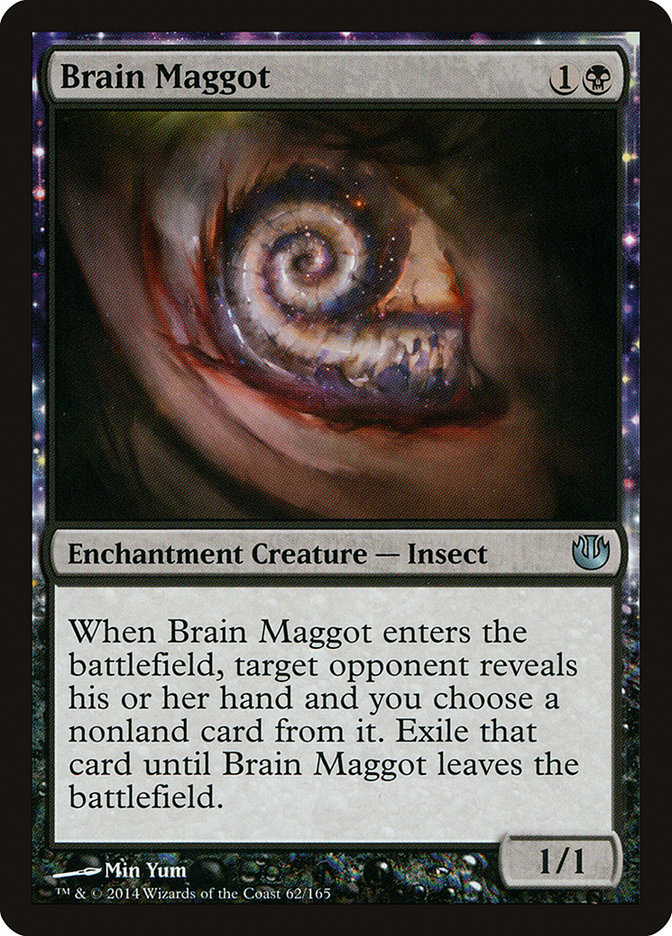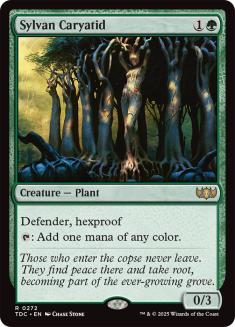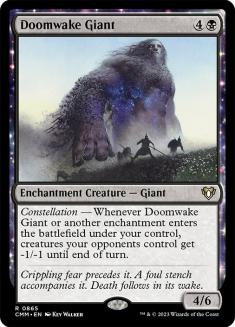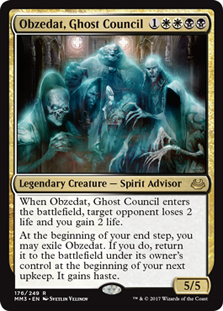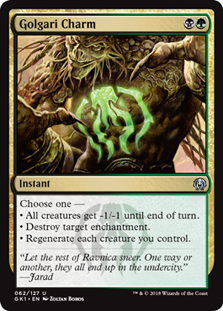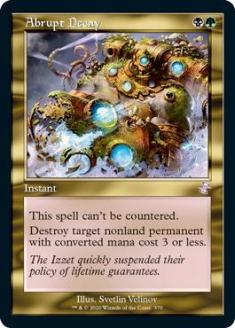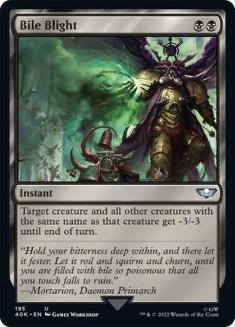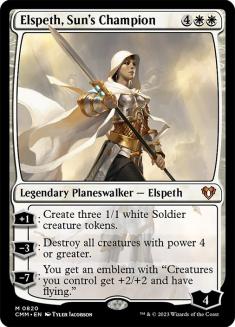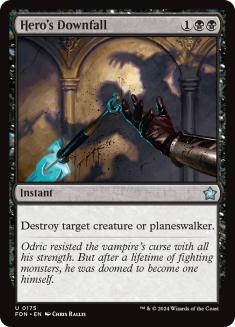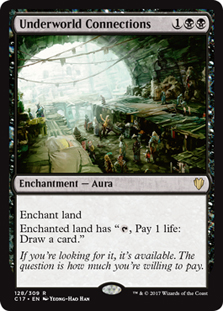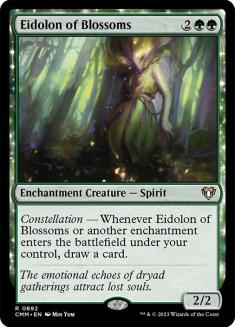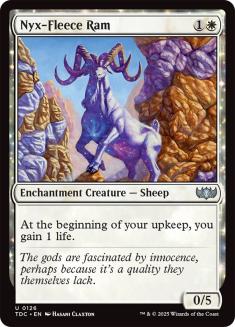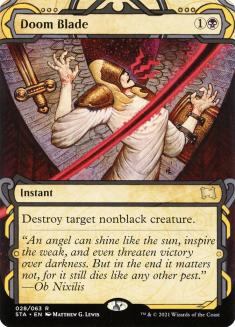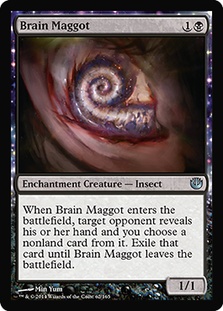It’s demoralizing to lose Round 1 of a tournament. It always stings to lose a match deep in a tournament with top 8 on the line. Those were my two losses
last weekend in the Standard Open last weekend in Indianapolis, exacerbated by them being both broadcast on SCGlive for the world to see.
As I alluded to last week
, I have learned a new perspective on losing, tilt, and how to have a proper mindset for a tournament. As a result, I was better equipped to handle my
defeat in this tournament, but I would be lying if I said it didn’t still hurt some. The reason isn’t that I missed out on top 8. I’ve lost countless
win-and-ins for top 8 at SCG Opens (I expect it is more than I have won). I’m no stranger to the near miss. I’m familiar with that bitter cup.
The reason is that I was playing a cool deck. If I was playing something like Jund Monsters, or Mono-Black Devotion, or some other established archetype it
would not have bothered me nearly as much. But here I was, rocking Doomwake Giant and Mana Bloom, on the cusp of greatness, and having it wrest away was
saddening. I so badly wanted it. I wanted to prove that you don’t have to follow the same path, that you can play something interesting, something new, and
still do well with it.
Justin Crandall was successful last weekend with a similar plan
. He played a Naya deck similar to the one Adam Van Fleet finished in 10th place with at the Somerset Open, a deck I played against CVM in a Versus Video last week. I mentioned in the Versus Video
that I felt it had way too many temples and needed more lands that came into play untapped. Justin cut 3 of the 11 temples, and told me at the event that
they weren’t very good for him. He ended up winning the Open.
In his top 8 profile, he listed his reason for playing the deck as: “BBD said it was bad.” That is probably the soundest logic I’ve seen for playing a deck
in some time, and it paid off for him in spades.
Sometimes all that a deck needs is something as simple as a mana base improvement to jump from a near miss to a tournament win. Sometimes, rather than just
give up on a deck at the first sign of adversity, the best option is to instead work on fixing the problems with the deck. Sometimes a deck is powerful
enough to be a contender, and it just needs one more piece.
Speaking of finding one more piece, I have become increasingly more and more happy with what I like to call “Social Media Deckbuilding.” Frequently, I will
have a cool deck, or a neat idea, but I will be missing one crucial piece that I need to fill a specific hole or answer a specific problem. I spend a lot
of time thinking about decks, and over time, thanks to theory and testing, my raw ideas start to get tuned into something resembling a real deck. Yet, I
still often miss things and have holes that I can’t figure out how to fill.
That’s when I turn to social media. Every time I have posted a deck or hole I need filled on social media, I have gotten a plethora of great answers, some
of which I have actually gone on to employ to great success. I also get a number of ideas that I can immediately reject for one reason or another. It’s
important to be able to filter out the responses, but enough responses will eventually turn up a gem.
When I was in need of a card to beat Jund with out of Melira Pod, Twitter served up Sigarda, Host of Herons. I bought one from a dealer booth and then went
on to win matches against Jund and UWR with Heir Heron at Grand Prix Richmond.
I top 8’d the Legacy Open in Atlanta earlier this year with a Miracles list that was built and refined on the drive to Atlanta with the help of Facebook.
When my Junk Reanimator deck was lacking a solid answer to Jace, Architect of Thought, I turned to Twitter. Someone came through with Vraska, the Unseen.
Vraska turned out to not only be exactly the card I wanted against Jace, but also a powerful enough card to find its way eventually into my maindeck.
Therefore, when I posted this tweet:
Deck seems sweet, but feels like it's missing something. Not sold on all the removal and
want a 2 drop creature. pic.twitter.com/ReNDkz4e4q
— Brian Braun-Duin (@BraunDuinIt)
May 30, 2014
I wasn’t surprised when a number of people came through with exactly the card I was looking for: Brain Maggot
That led to an 8-2 finish, good enough for 21st place, with the following list, a deck I like to call “Shake and Wake”:
Creatures (19)
Planeswalkers (2)
Lands (24)
Spells (15)

Kevin Gerhart also took the plunge and battled with the deck at the open. He also came close to top 8’ing, falling short near the end. We both came to
similar conclusions about the deck: Banishing Light wasn’t as good as we expected, Brain Maggot overperformed, and Doom Blade is the best sideboard card in
Standard.
As a result, this is the list I am looking at playing next:
Creatures (20)
Planeswalkers (2)
Lands (25)
Spells (13)
Sideboard

It may seem like heresy, and in fact it is, but I trimmed down to three Mana Blooms in this list. I said to multiple people that Mana Bloom is one of the
best cards in the deck and uncuttable. Well, in Magic, there are no sacred cows, and Mana Bloom would be about the furthest thing from a sacred cow even if
they were a thing. I mean come on, it’s ****ing Mana Bloom.
In various matchups, I would trim on Eidolon of Blossoms or Doomwake Giant, such as cutting Doomwakes against Revelation decks and cutting Eidolon against
super aggressive strategies. Whenever I did, I would also cut one Mana Bloom so that I didn’t flood out on them without a Constellation creature to go with
it.
Here, I have decided to cut one and add a 25th land in place of it. Both matches I lost at the open were to stalling on land, and I felt the deck could
have benefited from having an additional land. I only flooded out once that I can recall, and I ended up winning that game anyway thanks to the absurd
power of an Eidolon of Blossoms off the top and some enchantments to chain together.
Adding an extra land also helps out the sideboard plan against control decks of cutting the 4 Sylvan Caryatids, which reduces the chances of getting stuck
on two land and unable to play Courser of Kruphix or Underworld Connection to dig deeper through the deck and hit more land drops.
I feel like I might be getting ahead of myself, though, and for that I apologize. I should take the time to really talk about the deck, why it is good, and
what makes it tick.
These three cards make up the engine that fuels the deck.
Let’s start with Eidolon of Blossoms. When you have an Eidolon in play, you get to start chaining through your deck. It honestly feels a bit like cheating.
Assuming an answer exists to whatever your opponent is doing, and it’s hard to imagine it doesn’t with Doomwake Giant, Elspeth, Hero’s Downfall, and
Banishing Light, you can usually take over a game completely with an unchecked Eidolon.
Doomwake Giant goes hand in hand with this plan. On stats alone, the creatures in this deck suck. Courser of Kruphix, Eidolon of Blossoms, and Brain Maggot
are never attacking through anything without help. Doomwake Giant provides that help, by providing the ability to start clearing through your opponent’s
creatures. Once you establish control of the game, Doomwake Giant can just wrath your opponent ever turn for the rest of the game.
In addition to providing inevitability and the ability to lock your opponent out of the game, Doomwake Giant also just has a huge body. Numerous times I
was able to beat cards like Advent of the Wurm simply by sticking a 4/6 in front of it. Doomwake can really handle a lot of problems just by being big.
Doomwake is the Shaquille O’Neal of Constellation.
Doomwake Giant also gets better in multiples. A second Doomwake Giant and a Mana Bloom gives all of your opponent’s creatures -4/-4. Once you begin to
establish a board like that, you can just start doing degenerate things each and every turn.
What then about Mana Bloom? Well, Mana Bloom is the engine that ties these two cards together. As you start to draw more of your deck you are going to see
more and more copies of Mana Bloom. The way Mana Bloom works is that you can return it to your hand in the beginning of your upkeep if it has no counters
on it. As a result, you can just cast the same Mana Bloom each and every turn once for the low cost of a single green mana.
Each Mana Bloom is “G: Draw a Card” with an Eidolon of Blossoms in play and “G: Creatures your opponent controls get -1/-1 until end of turn” with Doomwake
Giant in play. With both in play, you can just start chaining into more and more enchantments that all start killing your opponent’s creatures. It
snowballs out of control pretty quickly. A balanced board state can very quickly transition into a rout if these cards go unchecked.
Mana Bloom can also serve as an accelerant. A turn 2 Mana Bloom lets you cast an Eidolon on turn 3, or as is more common, lets you play a Courser of
Kruphix and still play a temple or a land off the top.
One neat trick with Mana Bloom is that you can remove counters on both your turn and your opponent’s turn. Sometimes you will cast a Mana Bloom for two and
later draw something like an Eidolon of Blossoms or Doomwake Giant and then you will want to return that Mana Bloom back to your hand so you can start the
engine. Just remove a counter on your turn and remove one on your opponent’s turn and it will return to you next upkeep. Likewise, sometimes a Mana Bloom
for one can help you with the mana fixing you need to cast something like Hero’s Downfall and still pick back up the next turn to reuse.
In addition to both being enchantments to trigger Constellation, Courser of Kruphix and Underworld Connections also play integral parts in the deck.
Courser of Kruphix is most powerful when they have ways to draw cards. This deck has multiple, with Eidolon of Blossoms and Underworld Connections.
When you have something like an active Connections, Courser of Kruphix is actually able to draw you an extra card nearly every turn. If you have a land on
top of your deck, you can just play it. If you have a spell, you draw it with Connections first, and then look to play a land afterward. If you also have
something like Eidolon of Blossoms, you can start chaining together card draw until you find a land on top of your deck. Then you can play that land with
Courser and go back to drawing real spells.
When these two are active together, it feels like you are drawing three cards a turn, which is extremely powerful. The only downside that it is very slow,
and that is sometimes problematic against the quicker decks in the format.
This card may seem underwhelming, and frequently it is, but it actually serves a vital role in the deck. When games go long with Constellation, you are a
huge favorite to win on the back of the superior endgame Doomwake Giant and Eidolon of Blossoms provide. Brain Maggot usually serves to help buy time.
The best thing to do with a Brain Maggot is to take whatever card will throw the opponent off their curve. Then if they are forced to spend a turn killing
your Brain Maggot to get back their powerful card instead of advancing their own board, you start to pull ahead a bit. It doesn’t matter that they get the
card back, what matters most is that they aren’t pressuring you nearly as much and you are effectively pushing for a longer game, a game that favors this
deck.
Why play Brain Maggot over Thoughtseize? The reason is that a late-game Brain Maggot isn’t a dud where Thoughtseize is. Early game, a Brain Maggot can
strip a card and serve as a tempo play. Late game, it can trigger Constellation and help further the beautiful goals of Doomwake Giant and Eidolon of
Blossoms.
An aside about the deck itself. The deck plays a lot like a combo/control/aggro deck. You want to try to just stay alive long enough to get a couple of
constellation guys safely in play. That’s the control element. Then, once you’ve established that, you can just go crazy and blow up the world and draw a
million cards. That’s the combo element.
The aggro element is your opponent’s tilt after you blow up their Blood Baron of Vizkopa with Doomwake Giant.
Sideboarding
One of the neat things with a deck like this is that you can effectively sideboard out of the constellation deck and into just a good old fashioned Junk
value deck in certain matchups. With the exception of a card like Mana Bloom, all of the cards in the deck are very playable on their own, and in matchups
where you are cutting out a lot of Constellation cards, Mana Bloom still can provide occasional acceleration.
UWx Control
Out:
In:
This is very variable to change. If they have a bunch of Elspeths, I would keep in two copies of Doomwake Giant and cut something else. What that
“something else” is depends on the contents of their deck. If they have a bunch of Detention Sphere effects, probably cut a Hero’s Downfall. If they don’t,
cut an Abrupt Decay since Golgari Charm can already accomplish that effect.
I think this is kind of a rough matchup since game 1 is bad. Post-board the matchup swings in our favor a ton. Obzedat is in the sideboard entirely to
improve this matchup, since you probably have to win both post-board games.
Mono Black variants
Out:
In:
That’s a simplistic change, but in reality I like to change up my sideboarding depending on whether I’m on the play or the draw. On the draw, I want to
keep in Abrupt Decay since I feel like this is a very good matchup for us, and turn 2 Pack Rat is one of the few ways to lose. When we’re on the play,
Downfall and Banishing Light can handle it, but having an Abrupt Decay on the draw to snag it can be the difference between life and death.
On the draw I like to bring in Thoughtseize since I can steal a Rat before they can cast it, but on the play I like Brain Maggot a lot since you can throw
off their tempo, and games go long and are full of attrition where Thoughtseize can be a dead draw late.
R/W Burn
Out:
In:
In regards to Thoughtseize, I brought it in against Burn when I played against it in Indy. They have cards like Skullcrack that can mess up your day. Even
just knowing what is in their hand can be huge toward playing in such a way to minimize the damage you take. It may seem weird to want a one for one
discard spell that deals you damage against Burn but I’ve found it surprisingly viable.
The goal here is to take as little damage as possible, kill everything they do, and gain as much life as possible. Eventually you will win with something,
such as Obzedat or sustained Courser beatdown.
Jund Monsters
Out:
In:
Brain Maggot is actually kind of mediocre against Monsters. While it seems like it would be good, and in fact, Thoughtseize is excellent against them, it
fails to live up to expectations in practice. The reason I’ve found is that Brain Maggot is at heart a tempo play, and Jund Monsters has a bunch of mana
and a bunch of four drops and if you take one of their four drops, they can just play another. You don’t disrupt their tempo at all, and they will
eventually kill your Maggot and get their card back. Thoughtseize makes it gone for good.
These are the core decks that make up the Standard format. There are other decks people are playing, but none as popular as these. If you have a specific
matchup you are interested in sideboarding advice for, let me know and I’d be happy to help.
Is this deck the best deck in the format? No, I would say definitely not. I think Jund Monsters is and I don’t think it is particularly close. With that
being said, this deck is still competitive and it’s a fun deck, to boot. It also has a lot of room to grow. The core of the deck stays together through the
rotation and there are a ton of different ways this deck can be built.
I was looking to play a fun, interesting, and powerful deck in Indianapolis, and I wasn’t disappointed. There are a lot of different ways to build this
kind of an archetype, and the core of it survives rotation, so even if this deck doesn’t end up being a format powerhouse now, there’s no reason to think
it can’t in a year.
I think there is a lot of power in this archetype, and I aim to keep working on it. I just hope my quest isn’t Doomed.

